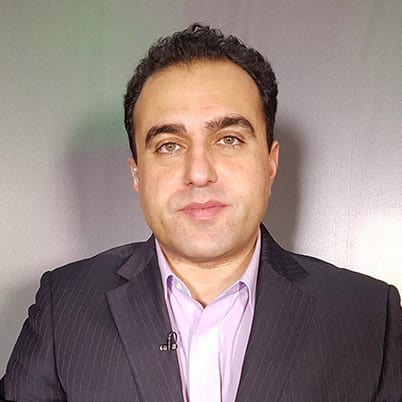In late February, Iran hosted its first “International Conference in Support of the Palestinian Intifada” in six years. First held in 1991 – and again in 2001, 2006, 2009 and 2011 — these high-profile conferences are an important feature of Iran’s regional policy, effectively acting as a focal point for the country’s hard-line position on the Israel-Palestine conflict.
The re-emergence of the conference underscores Tehran’s buoyant mood, as evidenced by its improving position in the region’s proxy wars, from Yemen to Syria. It was also a show of defiance in the face of threats by the new US administration and a slowly developing alliance between Israel and Saudi Arabia, ostensibly to roll back Iran’s regional advance.
However, the conference was also an affirmation of the Islamic Republic’s commitment to the Palestinian cause. The key question centres on the credibility of this initiative in view of an increasingly fragmented region and Iran’s role in deepening the divisions.
Show of force
In propaganda and public relations terms, Tehran’s Palestinian conference was a show of force which cannot be ignored by regional powers, in particular Saudi Arabia and Israel. The credibility of the latest conference was underscored by the long list of influential foreign guests who included representatives from leading Palestinian organisations, including Hamas and Islamic Jihad, as well as leading Islamic scholars and parliamentary delegations from 20 countries, among them seven heads of parliament.
The conference was also a show of internal unity as demonstrated by the attendance of top Iranian leaders and officials. Keynote opening and closing speeches were made by Iranian leader Ayatollah Sayyid Ali Khamenei and President Hassan Rouhani respectively. It is noteworthy that the two men do not always see eye-to-eye on foreign policy, but on the Israel-Palestine issue at least they appear to be fully united.
The top officials attending included the crème de la crème of the Iranian establishment: Foreign Minister Mohammad Javad Zarif; Majlis (parliamentary) Speaker Ali Larijani; Chief of Staff of the armed forces Major-General Mohammad Bagheri; and the commander of the Islamic Revolutionary Guards Corps, Major-General Mohammad Ali Jaafari.
The strategic and political moment was obviously chosen carefully so as to maximise the conference’s impact. There are clear indications that the Israeli-Palestinian conflict is entering a new phase, with the proposed two-state solution effectively moribund. Iran is secretly pleased by this development, not least because the inaugural conference back in October-November 1991 deliberately ran parallel with the Madrid conference, and warned explicitly of the eventual failure of a negotiated peace with Israel.
The Islamic Republic clearly wants to influence the next phase of the conflict through early strategic positioning and ideological posturing. It is noteworthy that Iran’s relations with Hamas – which were strained by the Syrian conflict – appear to be on the mend. Sami Abu Zuhri, a senior Hamas official, is on the record stating that, “The relation with Tehran [has] started going in the right track.”
Ideology over realpolitik?
A key motivating factor influencing the timing of the conference was the Islamic Republic’s desire to go on the diplomatic and rhetorical offensive in the face of a perceived Israel-Arab alliance against itself. Indeed, Israel and Saudi Arabia are inching closer in their shared concern of expanding Iranian influence. Specifically, the Saudis are concerned by the resilience of a pro-Iranian movement in Yemen despite a two-year military campaign, whilst Israel is alarmed by the deployment of Iranian forces and their allies close to the Israeli-occupied Syrian Golan Heights.
Yet ideology is undeniably an important factor in Tehran’s decision to host these conferences. At an ideological level, the Islamic Republic is committed to Israel’s destruction and its policy positions on the Israel-Palestinian conflict have to reflect this commitment. In his opening keynote speech, Khamenei described Israel as a “cancerous tumour”, imploring Palestinians to continue, indeed to intensify, the struggle until the “complete liberation of Palestine.”
Any serious attempt at questioning Iran’s ideological motive has to take adequate stock of the high cost of Iran’s hard-line position, notably being placed on the US State Department’s list of “state sponsors of terrorism” and the wide-ranging sanctions resulting from that designation. More broadly, and aside from the high financial and political costs, Iran’s uncompromising anti-Israel position is arguably the major stumbling block to a normalisation of ties with the United States.
The biggest challenge to Iran is the rationalisation of its Palestinian policy to make it consistent with its broader regional policy. This is much harder than before, as the so-called “Axis of Resistance” (ostensibly formed to challenge Israel) is involved deeply in the proxy war in Syria, a complex conflict with a strong sectarian component.
In the final analysis, and independent of its broader diplomatic and strategic challenges, for the foreseeable future at least, the Islamic Republic is committed to its status as Israel’s most potent enemy. This may yet provide unexpected political dividends, particularly if the situation on the ground deteriorates to the point of sparking a new intifada (uprising) in the occupied West Bank.
The views expressed in this article belong to the author and do not necessarily reflect the editorial policy of Middle East Monitor.









